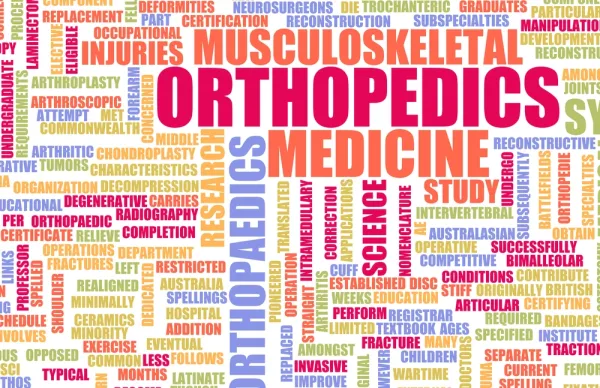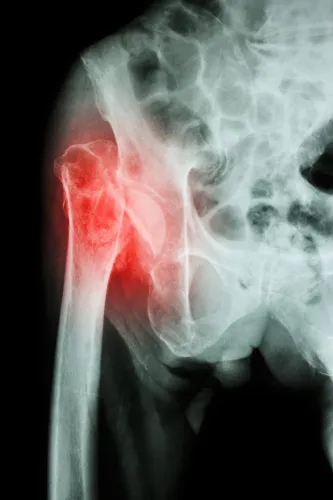Orthopedic Coding Alert
Debunking Myths About Causes of Hip Surgery Can Maximize Reimbursements
Key: Append modifier 78 if infection occurs during global period of firstprocedure. The cause of a hip replacement is almost as important as the surgery itself. Factors like infections, dislocations, and fractures play a big role in understanding what code you should use. However, a lot of misinformation could keep you from maximizing your practice’s reimbursement. Study the following myths to ensure you receive the payout you deserve. Myth #1: Modifier 22 is Okay for Congenital, Developmental Dislocations This is not true. Modifier 22 (Increased procedural services) is not always appropriate when trying to code for hip dislocations that are either congenital or developmental. While these conditions very often increase the difficulty of procedures, the orthopedic surgeon has to provide supporting documentation to support modifier 22 for these increased services. However, if you only add the modifier, auditors will question your claim and more often than not, deny it. “Additional documentation is crucial to getting paid for increased services,” says Melanie Witt an independent coding and documentation consultant in Guadalupita, NM. “The physician must have documented in some detail the amount of work involved (comparing normal surgical time to this surgical time), reason for the additional work (patient issues such as morbid obesity or severity of the patient’s condition, complexity of anatomy, technical issues with performing the procedure, etc.), and any other issues that the surgeon believes added significant work and time to this particular surgery.” In other words, a surgeon has to document any additional work as a direct result of the cause of the dislocation in the first place. In this case, the diagnosis alone is unsatisfactory when reporting so it must be documented by the orthopedic surgeon in order to avoid kickbacks from auditors. Example: If the patient has acetabular dysplasia with resulting pathologic dislocation of the hip, coded as Q65.89 (Other specified congenital deformities of hip) or congenital dislocation coded as Q65.0X (Congenital dislocation of hip, unilateral), a complex procedure may be required. This is because anatomical changes increase the complexity since the surgeon has to navigate the deformities with care before completing the procedure 27130 (Arthroplasty, acetabular and proximal femoral prosthetic replacement [total hip arthroplasty], with or without autograft or allograft) or code 27132 (Conversion of previous hip surgery to total hip arthroplasty, with or without autograft or allograft). The documentation must outline that because of the deformities, increased procedures were unavoidable. This will justify use of modifier 22. The modifier works only if supported by documentation. There may be anatomical changes that lead to significant increased complexity when dealing with congenital or developmental deformities. The operative report would need to clearly support the use of the modifier 22. “Always increase your charge and be prepared to defend the increase by comparing the additional work to another existing CPT® code as a comparison,” says Witt. “Encourage the physician to write a letter of explanation that outlines the patient’s condition and special requirements for this surgery in addition to having the description of the procedure is just the op note.” Myth #2: You Can Append Modifier 78 During the Global Period This is true if the patient returns for an arthrotomy to deal with an unexpected infection during the global period of the original hip procedure. You can code this as 27030 (Arthrotomy, hip, with drainage [eg, infection]) with the appended modifier 78 (Unplanned return to the operating/procedure room by the same physician or other qualified healthcare professional following initial procedure for a related procedure during the postoperative period). Many coders get tripped up because they try to code for the corresponding debridement. Remember that 27030 includes debridements and excisions of soft tissue. You will not be able to report 11042 (Debridement, subcutaneous tissue [includes epidermis and dermis, if performed]; first 20 sq cm or less) or 11043 (Debridement, muscle and/or fascia [includes epidermis, dermis, and subcutaneous tissue, if performed]; first 20 sq cm or less). If you do, your report will be denied. Myth #3: You Can Report Multiple Codes if Cause Was Dislocation This is true. Many codes, like the arthrotomy code mentioned above (27030), prevent the inclusion of multiple codes like debridement codes. But there is an exception. Multiple codes can be unbundled if the patient returns to the operating room as a result of a dislocation. However, the orthopedic surgeon must still demonstrate in his or her documentation that the procedure was extensive enough to warrant its own code as is the case with many dislocations. This can include diagnosis codes. Example: Consider a situation where a patient who previously received a total hip replacement returns because of hyperextension and a resulting dislocated prosthesis T84.02 (Dislocation of internal joint prosthesis…) and Z96.64 (Presence of artificial hip joint…). For the follow up surgery, you can report 27266 (Closed treatment of post hip arthroplasty dislocation; requiring regional or general anesthesia) and append modifier 78. If the procedure falls within the global period of the initial surgery, you can also report diagnosis codes like T84.02- (Dislocation of internal joint prosthesis…). Remember to add a sixth and seventh character to reach maximum specificity regarding the diagnosis. It may be necessary to indicate that another procedure ifit occurred during the global period. You also report the diagnosis code T84.02. You also report Z96.64. Again, remember to specify a seventh character for maximum clarity.
Related Articles
Orthopedic Coding Alert
- Hips:
Debunking Myths About Causes of Hip Surgery Can Maximize Reimbursements
Key: Append modifier 78 if infection occurs during global period of firstprocedure. The cause of [...] - E/M:
Find Out the Best Ways to Use EHRs When Coding
Key: EHRs do not track physical examinations. Among the many data tools available to your [...] - Benchmarking:
Answers to Your Benchmarking Questions Can Improve Your Practice's Operations
Monthly benchmarking means your practice can observe granular trends more easily. A good practice thrives [...] - You Be the Coder:
You Can Maximize Cast Codes With the Right Know How
Question: I had no trouble coding for an ostectomy for a calcaneus spur, but I’m not [...] - Reader Question:
Knowing the Site of Injection Changes Your Code
Question: The surgeon treated a patient with De Quervain’s tendinitis. So after an injection into the [...] - Reader Question:
A Sequestrectomy Involves More than an Extraction
Question: For a patient with of chronic osteomyelitis in their shoulder, my orthopedist performed a sequestrectomy [...] - Reader Question:
Complex Sports Injury Codes Can Be Made Easy
Question: The surgeon repaired a torn anterior cruciate ligament (ACL) and a torn medial meniscus on [...] - Reader Question:
Each Metatarsal Fractures Requires a Distinct Service
Question: A patient came in with a Lisfranc fracture in their left foot so the orthopedist [...]




